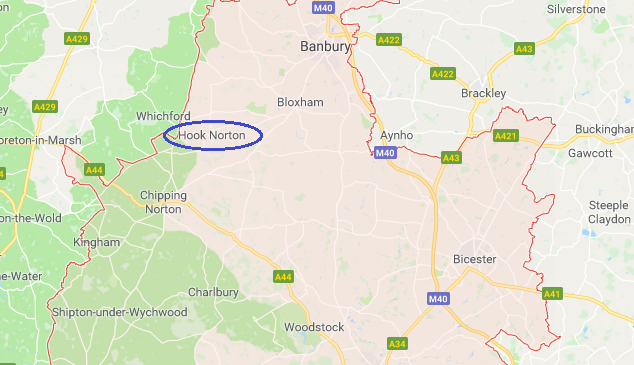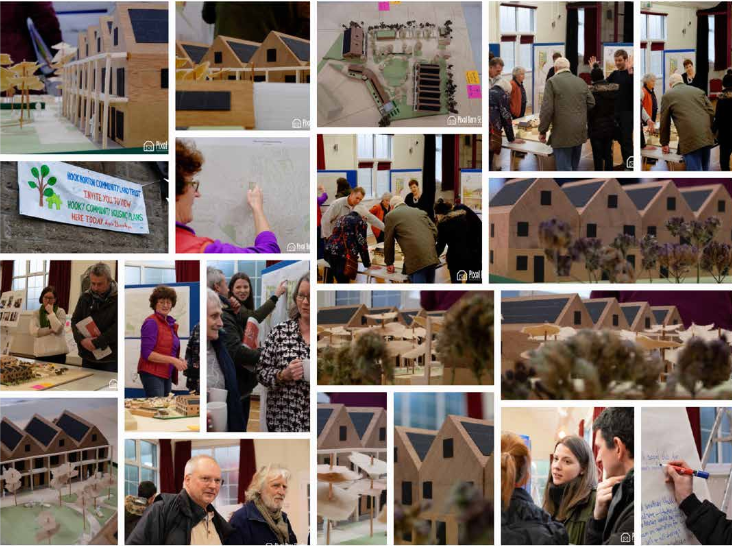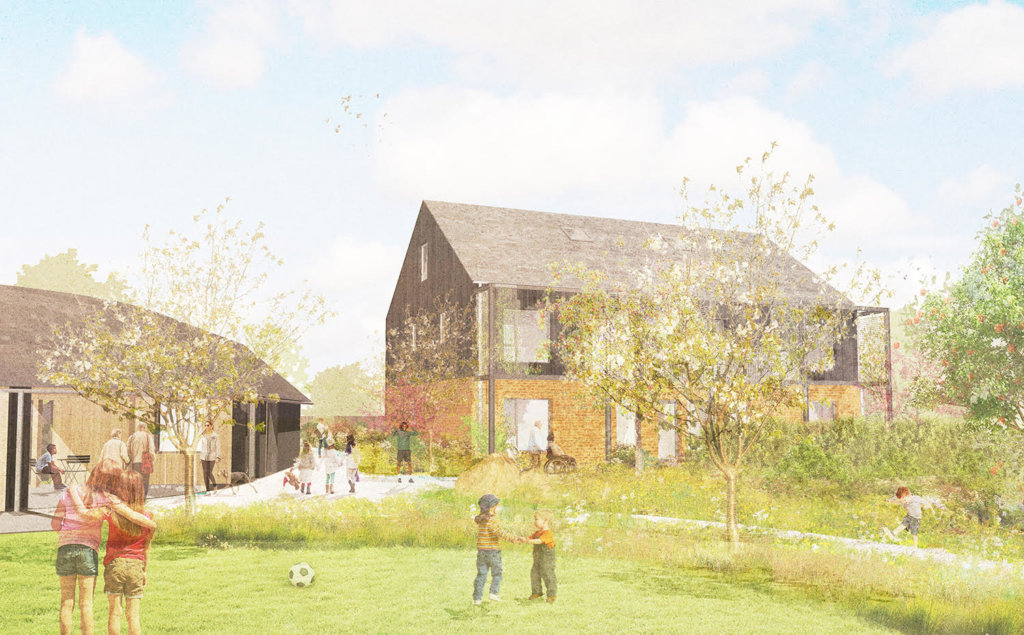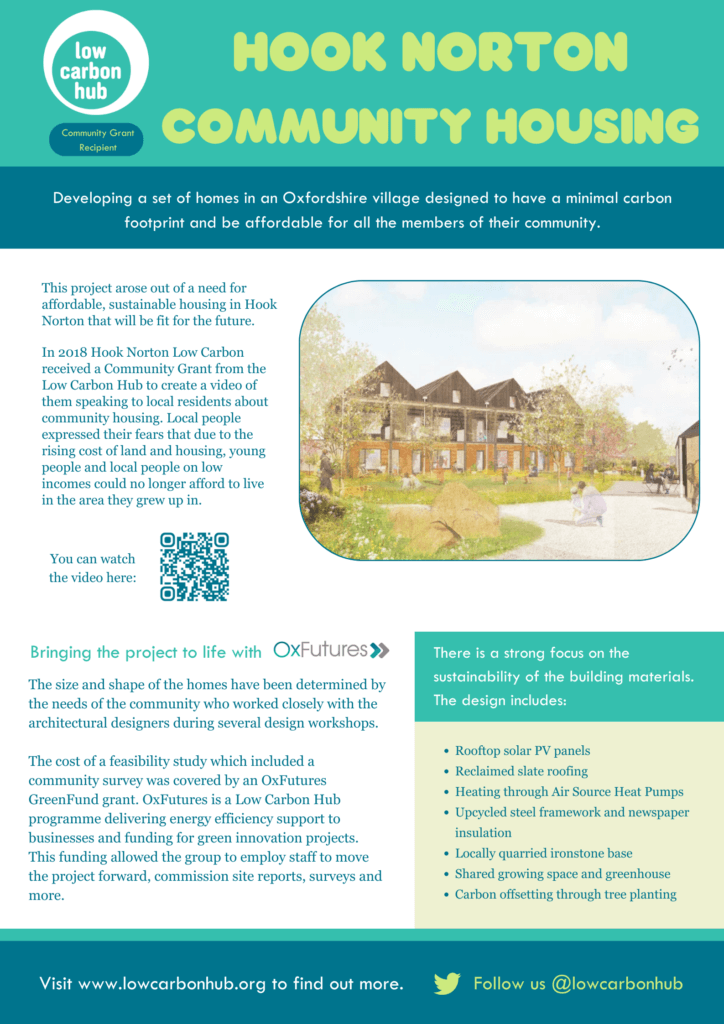Hook Norton Community Housing: building affordable, sustainable homes for the local community
Hook Norton Community Housing
With our population growing, we need to ensure we have enough homes for all. However, many new housing developments build homes which are not affordable for everyone, and which don’t take sustainability into account.
Hook Norton Low Carbon are tackling this issue head-on in their own community, designing and developing a set of homes in their Oxfordshire village which are specifically designed to have a minimal carbon footprint, as well as being affordable and accessible to all members of their community.

How the project came about
This housing project began when local members of Hook Norton Low Carbon, one of our Low Carbon Hub CIC Community Members, decided they wanted to do something with an area of overgrown and neglected land in Hook Norton. They came up with the idea of using the land to develop affordable homes for local people.

Engaging the community in Hook Norton
The first step in bringing this idea to life was to check that the local community supported the housing project, and what they would want to see included.
In March 2018 the group delivered a community housing survey to over 1000 homes in Hook Norton, with 533 completed.
Each year every Community Member of the Low Carbon Hub is eligible to apply for a £500 small grant, supporting their activities. In 2018 Hook Norton Low Carbon applied for their small grant to allow them to create a video with Oxford Digital Media speaking to local members of the community about the project, which you can see below.
It was clear from the community survey that there was a desire for community housing, and that there were some key elements that local residents of Hook Norton wanted to see in a new housing development:
- Shared community spaces to allow people to socialise and get to know their neighbours, with the idea of a community building on the site
- Green, outdoor spaces – potentially a park or playground for children
- Sustainable building practices including solar panels to provide energy, homes build to meet environmental standards, using sustainable and locally sourced building materials
- The homes to fit in with the look and existing community of Hook Norton village
- A variety of ages within the residents, allowing different generations to mix
- Some or all of the houses to be affordable to allow for diversity of residents.
The survey also asked whether the respondent was interested in living in the homes, with 37 people expressing interest immediately. This has since grown to a list of 50.

Bringing the project to life
With the requirements of the housing development fully fleshed out, it was starting to come to life. Hook Norton Low Carbon began the process of setting up a Community Land Trust, which would allow the development and management to take place – ensuring that the homes remain affordable and community-owned for the long term. The Hook Norton Community Land Trust became an official entity in July 2019.
Charlie Luxton Design were chosen as the architects for the project. The cost of the architecture practice was covered by an OxFutures Green Fund grant, matched funding which is available to innovative low carbon start ups – this funding also allowed the group to employ staff to work on the project, commissioning site reports and surveys, and more.
Community input has remained crucial throughout, and their ideas for the design and layout of the housing project were presented to the community, who were able to offer their input and shape the final designs.

The final design includes 12 households of a mixture of types: 2 1-bed flats, 8 2-bed flats, and 2 3-bed flats. These homes will be priced variably to allow all members of the community the chance to live there. It also includes a community building which was a popular request from local people, which will act as a community café as well as having a communal laundry, workshop space, and Library of Things.
There was a strong focus on the sustainability of the building materials, with the design including a local quarried ironstone base, reclaimed slate roofing, upcycled steel framework, and recycled newspaper insulation. Other sustainability aspects of the design include:
- Designed to Passivhaus standards
- Rooftop solar PV panels
- Heating through Air Source Heat Pumps
- Shared growing space and greenhouse
- Carbon offsetting through tree planting.
This final design was submitted as part of the full planning application for the housing project to the local authority in January 2020, and was successful in May 2020, meaning it can go ahead!



What’s next for Hook Norton Community Land Trust?
With planning permission granted, the next step for Hook Norton Community Land Trust to raise the funds to allow the build to take place. This will include opening a community share offer in order to raise funding for the build to take place. Once building is underway, a formal housing register will be opened to allow anyone to apply to live in the houses once completed. They anticipate the build to begin in summer of 2020, to be completed in 2021.
The Low Carbon Hub are also working on designing a microgrid for the housing project as part of Project LEO, which would allow the new housing development to be powered autonomously. This would connect the solar rooftop panels, but also allow electric vehicles to be connected – meaning that they can be used as energy storage (effectively batteries) when not in use. This could provide a decentralised system of locally generated energy and allow the community to be more energy independent and environmentally friendly.

Could your community save money on energy and cut carbon emissions?
If you have any questions about saving energy or developing your own community-owned renewable energy project, we’re here to help via our Helpdesk.
Find out more about our Low Carbon Hub community groups.

Hook Norton Community Housing: building affordable, sustainable homes for the local community
Hook Norton Community Housing With our population growing, we need to ensure we have enough homes for all. However, many new housing developments build homes which are not affordable for everyone, and which don’t take sustainability into account. Hook Norton Low Carbon are tackling this issue head-on in their own community, designing and developing a […]
